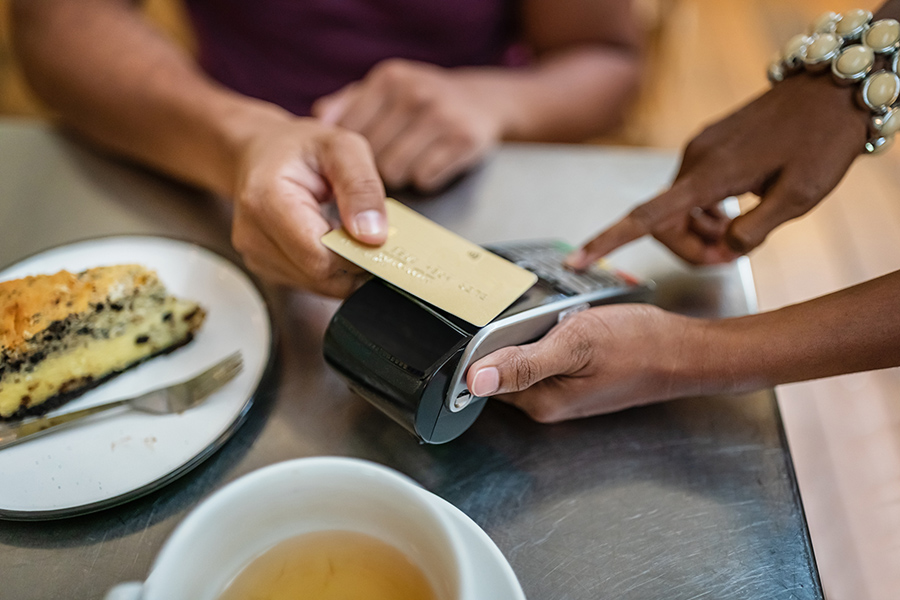
Bruce McAdams is the Associate Professor, School of Hospitality, Food, and Tourism Management, Gordon S. Lang School of Business and Economics at the University of Guelph. After coming from a background in foodservice — working three decades in restaurants as a dishwasher, cook, kitchen manager, general manager, and VP of Operations at Oliver & Bonacini — he moved to education in 2009. With his deep industry experience, McAdams figures he’s something of an inside expert on tipping.
He’s been studying the subject — from both a business and societal perspective — for nearly a decade. In a TED talk, he argued that the “relationship between tipping behaviour and quality of service is very insignificant.” People are used to tipping a certain percentage whatever the quality of service. A 2016 study conducted by McAdams and Prof. Michael von Massow, Department of Food, Agricultural and Resource Economics, found that tipping, in fact, causes challenges ranging from quality control to pay inequity.
Question: What got you interested in tipping in the first place?
Answer: My interest in tipping is now in its third incarnation. I think tipping is highly opinionated (so many different opinions around the practice) and misunderstood. It’s become my focus — and I believe I am only one of two or three academics who study the organizational dynamics of restaurants — even though, when I was working in the business I never questioned the practice.
I think tipping creates an unfair compensation system for workers in the restaurant business. For example, cooks and managers often play just as big of a role in a customer’s experience, but may not get the monetary benefits the wait staff does.
Question: Tipping has been in the news lately as some restaurants turn to a no-tipping or tip-included policy/service charge. Was COVID-19 the tipping point, or were restaurants going this way anyway?
Answer: Two really big things happened this spring. One is COVID and one is the attention to social justice issues in North America. With the first, when COVID hit restaurateurs, owners had the time to reflect on an archaic system. The system really has not changed in 30-50 years. Everything from our pricing to costing to rent to fixed costs has pretty much been the same. With COVID, we really had to go deep and look closely at systems. COVID pointed out the inequities. Also, Black Lives Matter. Tipping is discriminatory, with sexist overtones, so that became an issue as well. Tipping was accepted in the industry, but in the last 10 years people have been questioning it.
The system really has not changed in 30-50 years. Everything from our pricing to costing to rent to fixed costs has pretty much been the same.
Bruce McAdams, Associate Professor, School of Hospitality, Food, and Tourism Management, Gordon S. Lang School of Business and Economics at the University of Guelph
Question: Is tipping, in fact, an outdated practice?
Answer: It is. It’s been proven to have so many negative effects. With almost every operator, if I ask them the question — if God were able to create restaurants tomorrow, would you have tipping as part of the business model? — they’d say no. It’s a poor model because of inequity in pay, lack of revenue control, and it’s discriminatory in some respects.
Another huge impact is that tipping is concerned about what’s best for servers versus what’s better for the restaurant. A bartender will give a free drink to get a better tip. A server won’t serve a guest in another section. In a no-tipping restaurant, everyone’s success is based on all guests’ success.
Question: You say that tipping entrenches inequities. In what way?
Answer: You have to have two compensation systems. The regular system and the three-headed monster of tip-sharing, which is hugely concerning if managers are taking control of tips. It presents a huge CRA issue, and it takes hours and hours and hours of spreadsheets to say who’s making what. Some managers give their favourite servers the best sections and that creates issues between servers. The biggest issue is that it not only affects organizations but the entire industry. It creates transience in the industry because there’s no vested interest in the business. The server earns some money, then goes to travel. The cook studies for two years, then has to quit because of earning only $15/hour.

Question: How did we get tipping anyway?
Answer: There was tipping in Europe first, then it was brought here. It became lucrative for servers to earn a gratuity. In Europe there wasn’t this schmoozefest. Here friendly servers became a competitive advantage. Then along came places like Hooters, with the sexualization of servers. We evolved into this. It is a system that no one wants to be the first to go away from, but the tide may be turning.
A recent Canada-wide survey conducted by Sylvain Charlebois at Dalhousie University suggests that many Canadians (56% of respondents) are now in favour of including tips in menu prices. In a 2016-2017 Angus Reid study, it was only 36%, so there is a significant increase, some of it is because of COVID.
Question: How are consumers reacting to the change with some restaurants moving away from tipping? Will it take them long to adjust or are they pivoting as quickly as restaurants are these days?
Answer: Pre-COVID, I wouldn’t have seen us moving away from tipping. There is precedent in other countries, like France. I honestly didn’t think it would take root here, but an Angus Reid study shows that younger people are more accepting of no tipping and are more sensitive to social justice issues.
Question: If a restaurant decides to go this route, how should it communicate the change?
Answer: When Earls opened a new concept called Earls.67 in Calgary in 2016, they added a 16% service charge, and some people were angry because they felt they were being told how much they were allowed to tip. Six months later, the restaurant was forced to back down. So, many people who wanted to go to no-tipping got off on wrong foot with a built-in service charge.
Communication is the most important thing — on the menu, on the website, when you’re seating people, when you’re talking to your staff — explaining why, explaining how to handle questions. It’s a lot of talking, talking, talking. Reinforce the reason: to provide a living wage for all employees. It’s a huge decision that takes a lot of time and thought. Even restaurants doing it will need to continually revisit the decision.
Important link
- For more information read: Have restaurants reached the tipping point?



